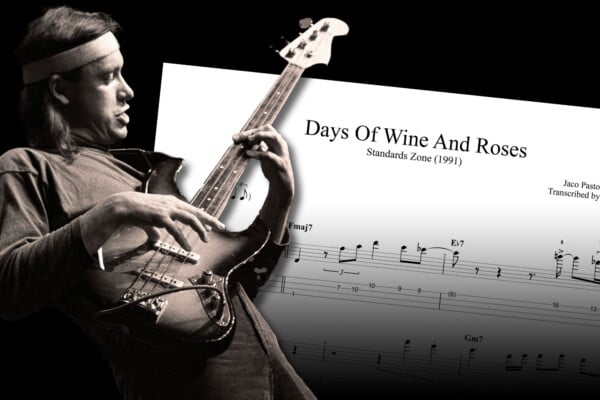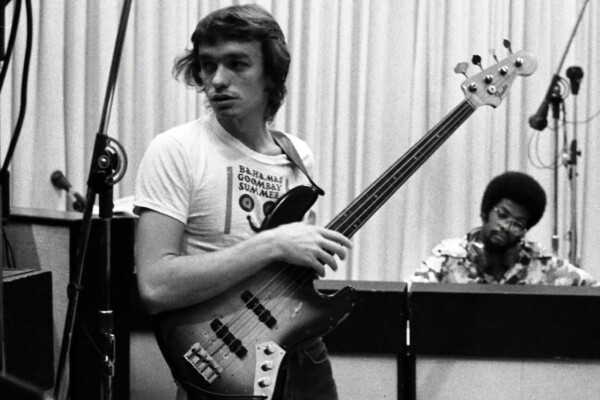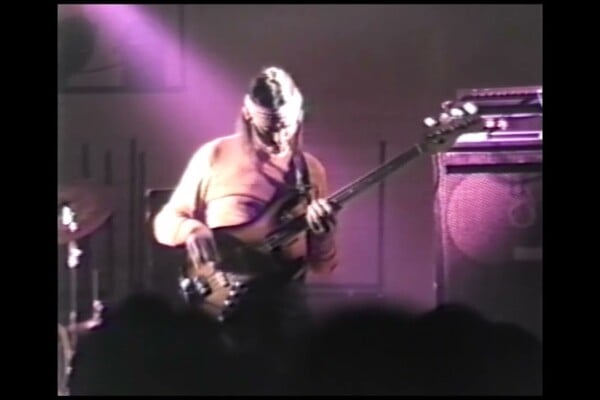Bass Transcription: Jaco Pastorius’ “Jam In E”

Today, we’re paying homage to the legendary Jaco Pastorius who is father of the Modern Electric Bass – which is, as many of you know, also the title of the only educational video Jaco has left us.
In this video interview, Jaco discusses with Jerry Jemmott many aspects of his playing and sheds light on the basic yet crucial elements of playing the bass, such as fretting hand, picking hand, scales, arpeggios, harmonics, and improvisation.
I choose to share with you this improvisation because, as well as other pieces, it encapsulates many of Jaco’s signature phrases, licks and attitude – and perhaps it is the piece that many bass players have to confront when they approach the study of Jaco’s style.
This transcription is an excerpt from my publication Contemporary Bass Guitar, Jaco Pastorius, where I revised the transcriptions completed with TABs to give representation of what Jaco played in the video as close as possible.
The ideas and phrases in this improvisation provide an insight into Jaco’s creativity and vocabulary. You can find many themes, fragments, and variations of his distinctive grooves and bass lines played on many of his live and studio recordings.
Pay attention to the fingering and fretting hand position used to play each phrase. Keep your fingers well spaced at one-finger-per-fret and use the stretched position when needed – as opposed to moving your hand.
As for the picking hand, the use of what I call double rake helps for a more staccato effect when playing combinations of two notes per string, to play ghost notes and to make the the groove bounce. The Double Rake basically is like raking with two fingers (index and middle) and takes advantage of the difference in length of these two fingers: you can pick a string with the shorter finger first (index) and then with the longer one (middle) – and by raking you get two notes per string with one movement. Perhaps it could be an interesting subject for the next lesson – leave a comment if you’d like to know more about that.
Paraphrasing Jaco, the distinctive sound of a musician is mostly given by the choice of notes than just the tone itself. For this reason I cross-referenced below some sections of this Jam you can find in other examples from Contemporary Bass Guitar and other tunes Jaco played.
Notes: The idea presented in bars 1-5 recalls the pattern of the B section of the tune “Come On Come Over” from the album Jaco Pastorius (1976).
The groove in bars 9-16 is the same groove Jaco plays under Bire?li Lagre?ne’s guitar solo in their live version of “Teen Town” from the album “Live In Italy” (1991) and on the track “No Slack” from “Jazz Street” with Brian Melvin (1989).
The harmonics in bar 21 (E69; E769; Em7) are another Jaco’s trademark. From “Portrait of Tracy” to “Continuum”, as well as in his live bass solos, the use of harmonics to play chords is a distinctive element of Jaco’s style.
The intro of the tune “Barbary Coast” (see Example 22) is a Jaco signature lick. It appears between bars 25 and 26 of this improvisation as well as in bar 29 of the following Example 16.
Bar 34 presents groups of five notes inside three sextuplets. Also see Example 15 for more grouping exercises.
“Jaco’s extraordinary success and his desire to share his music along with his message to ‘Leave something for the kiddies’ was fuelled by his relentless work ethic, commitment, and competitiveness.” – Jerry Jemmott
Hope you’ll enjoy and learn a lot from this little gem and wish you good luck with your music journey.
Download the transcription and follow along with the video below.




Super et génial bassiste..